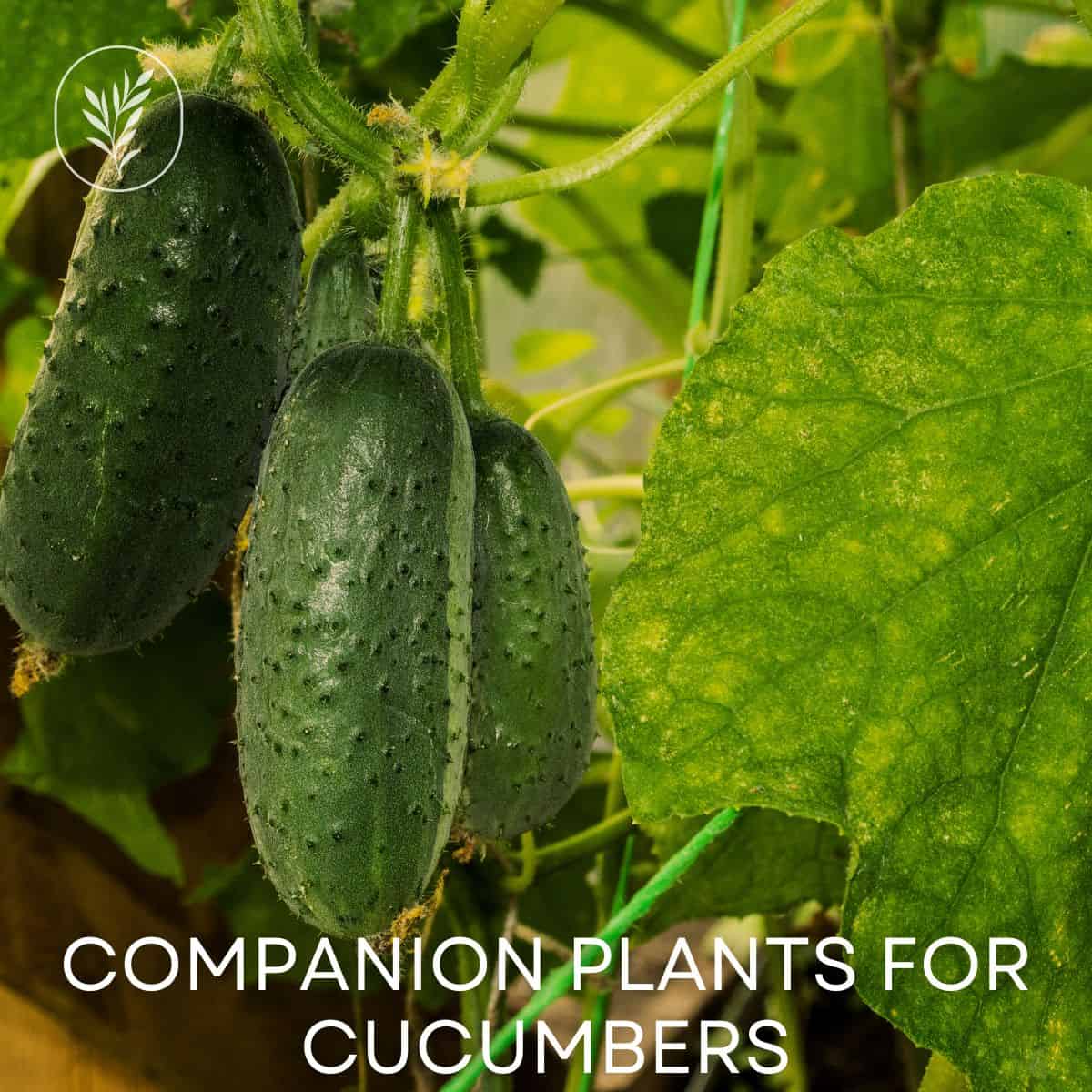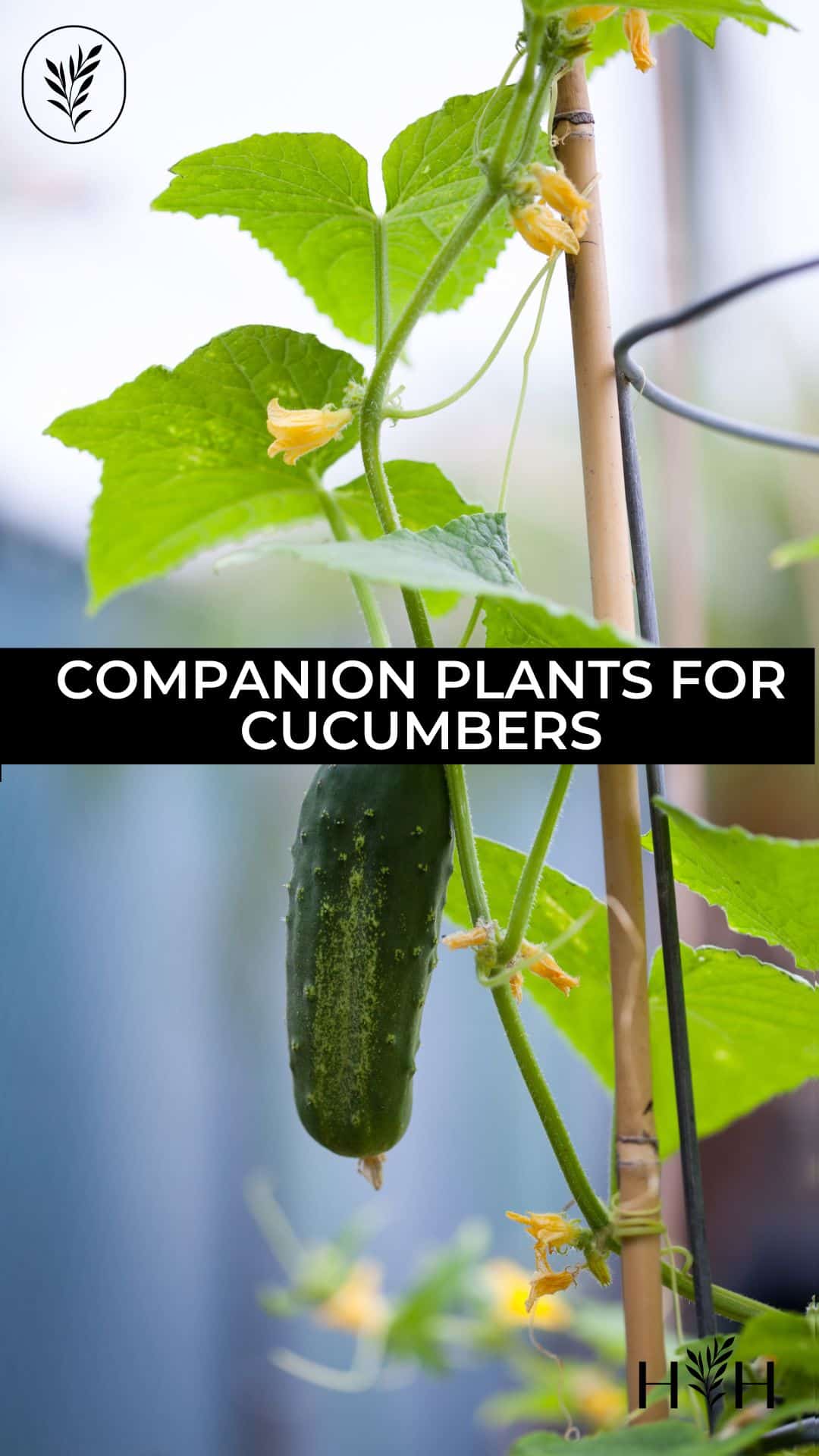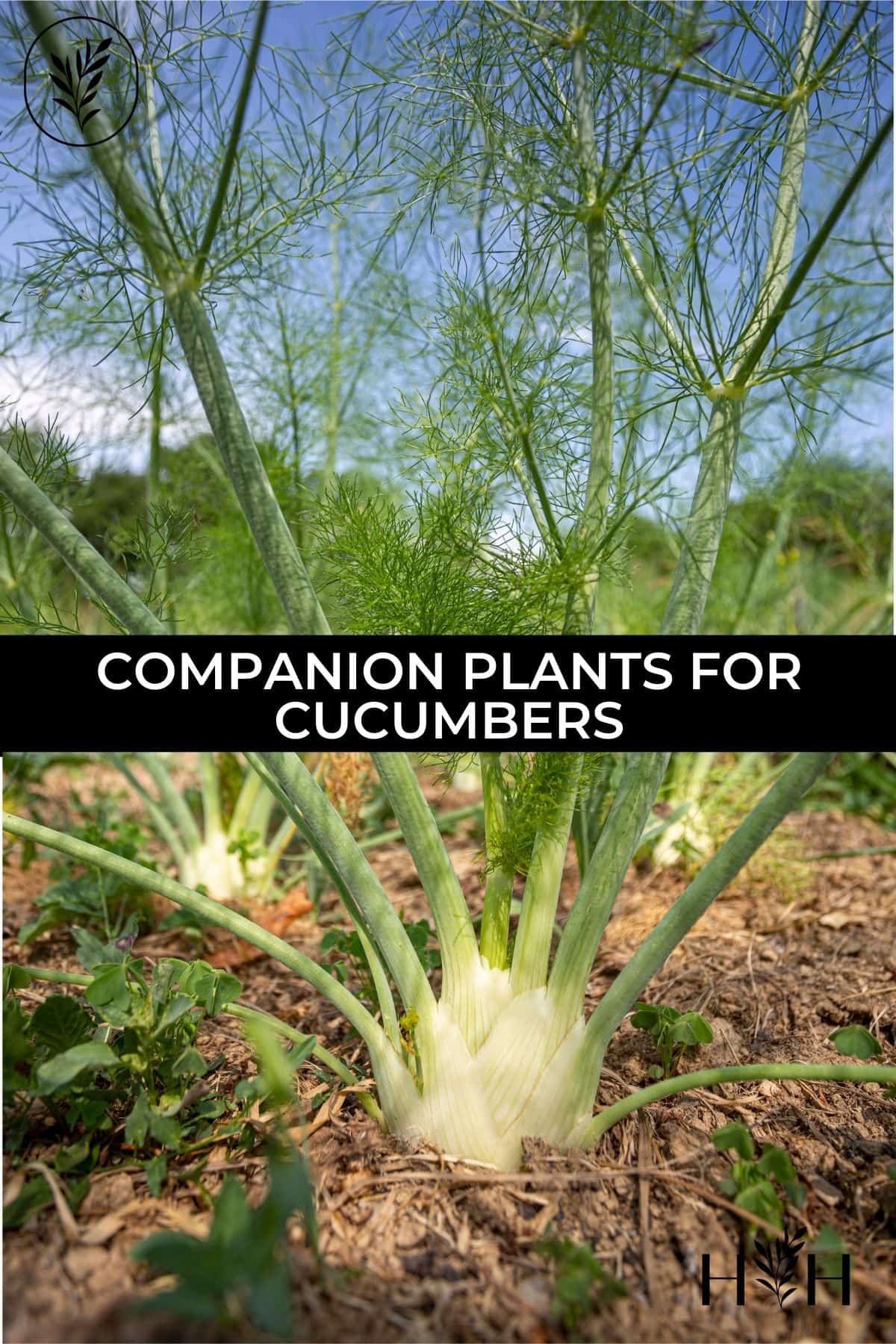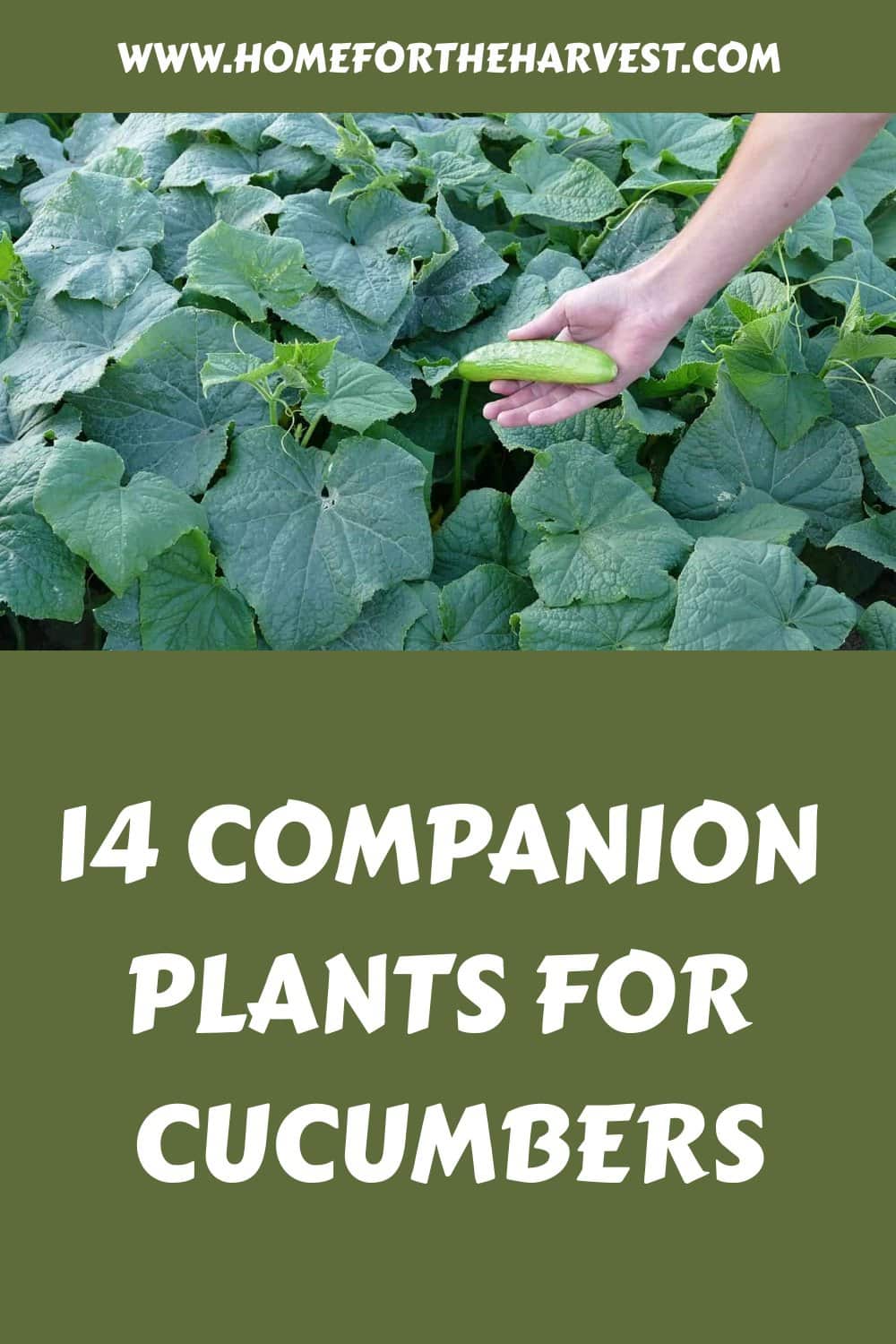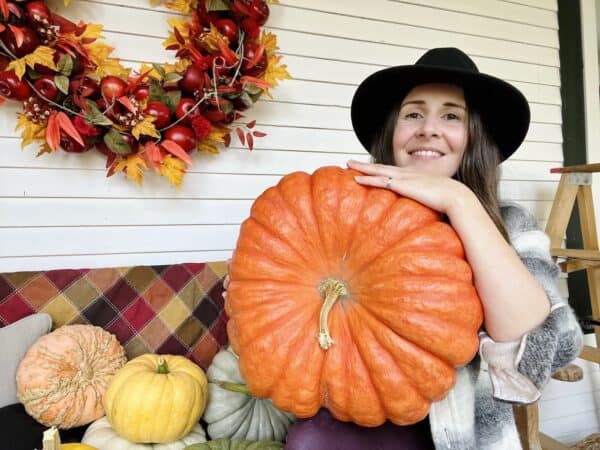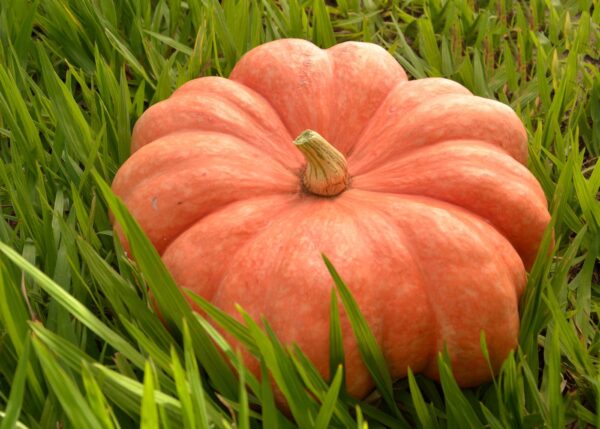Wondering what to plant beside the cucumbers in your garden? Fortunately, there are quite a few good neighbors to incorporate into your veggie beds.
The best companion plants for cucumbers include pumpkins, squash, lettuce, peas, onion, radish, tomatoes, corn, dill, beans, nasturtiums, and celery. These companion plants have a host of benefits, including attracting beneficial insects, deterring and repelling pests, offering a living trellis, supplying nutrients to the soil, and suppressing weeds. Avoid planting potatoes nearby your cucumbers.
If you’re considering growing cucumbers in your garden, keep reading. This post will discuss the best and worst cucumber plant partners so that your garden can flourish!
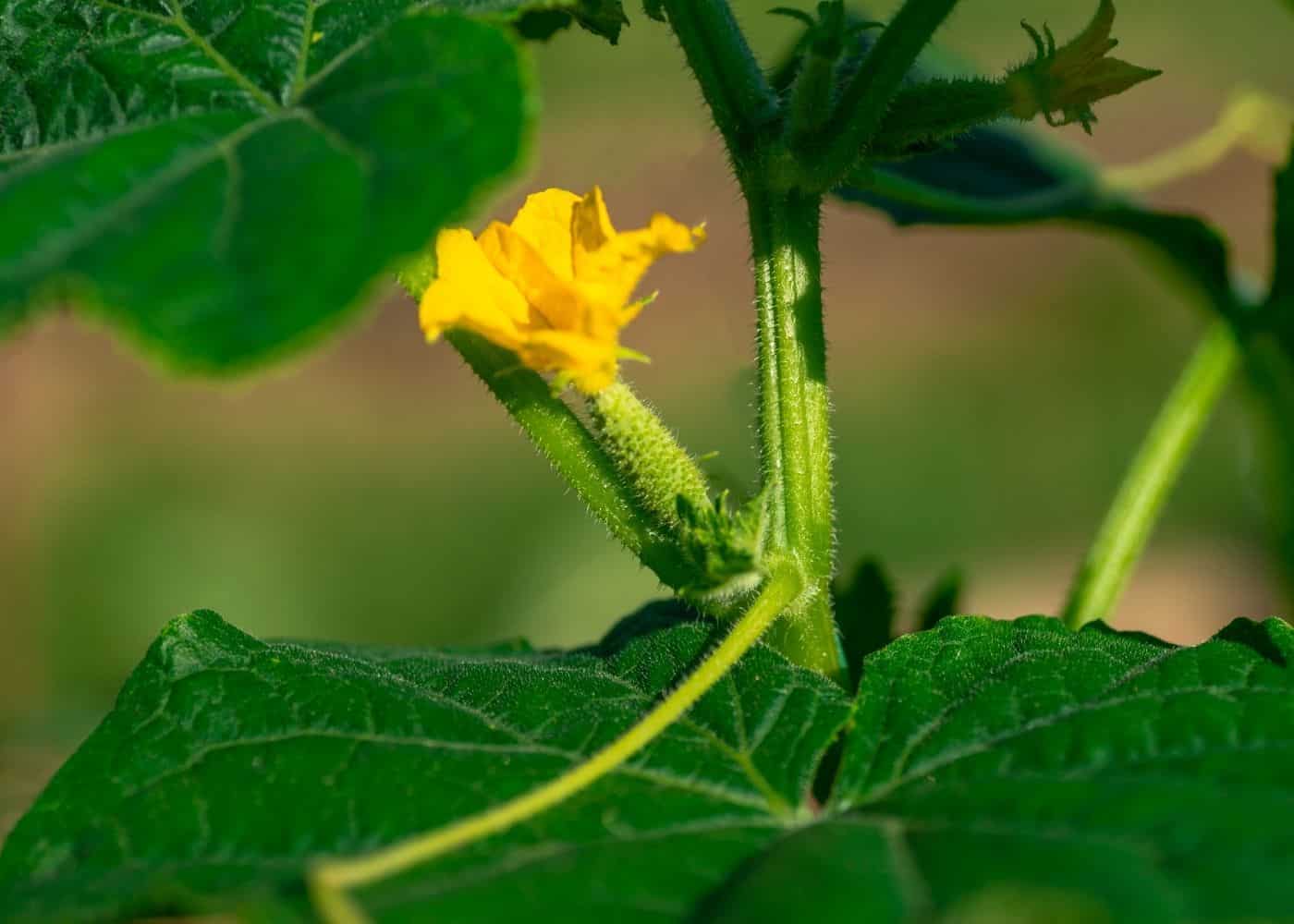
Cucumber companion planting basics
Cucumber plants are members of the Cucurbitaceae family, which contains squash, gourds, watermelon, cantaloupe, and pumpkins. Cucumbers grow well alongside other members of the Cucurbitaceae family since they grow under similar conditions and can prevent similar pests. As for scented companion plants, herbs like dill, chamomile, and lavender are particularly beneficial to cucumber plants by repelling harmful pest insects.
1. Pumpkins
Cucumber plants thrive when planted amongst pumpkins because pumpkin plants attract squash bees (Peponapis species). These local bees resemble honeybees in appearance, but the males prefer to sleep inside Curcubit flowers (like cucumber blossoms). In addition, squash bees pollinate many other surrounding plants such as pumpkins, melons, cucumbers, zucchini, and other crops. Because squash bees are so beneficial to a variety of plants, avoid tilling the garden soil as the bees build their solitary nests in the ground.
2. Zucchini
Zucchini are excellent companions for cucumbers because, like pumpkins, they attract squash bees. These bees fertilize zucchini and pumpkins, which can increase your harvest.
3. Hubbard Squash
Hubbard Squash is a particular type of squash that’s extremely appealing to cucumber pests. Some common cucumber pest insects, such as squash bugs and squash vine borers, like feeding on Hubbard Squash. These pests love feeding on Hubbard Squash so much that they become sidetracked from eating the cucumber plants.
For best results, plant the Hubbard Squash two weeks before the cucumbers, keeping them at least a few feet away from the cucumber plants. Ideally, you want to plant your Hubbard Squash on the perimeter of the garden.
4. Corn
You can plant corn near your cucumber plants to create a living trellis. Weeds are kept at bay because the cucumber plant’s leaves shade the soil at the base of the corn. The cucumber leaves can also act as a living mulch to keep the soil moist in the hot mid-summer sun.
5. Melons
Melons are similar to squash because both plants attract bees. These bees pollinate both the melons and the cucumbers, producing higher yields at the end of the season. Melons also attract earthworms, which move through the soil and aerate it.
6. Peas
Peas are a good companion for cucumber plants because they release nitrogen from their roots that enriches the soil. Nitrogen is a key macronutrient absorbed by the roots of a cucumber plant, resulting in increased leaf production, photosynthesis, and eventually to larger harvests.
7. Sunflowers
You can plant sunflowers near cucumber plants to establish an upright living trellis. Choose cucumber varieties that will not weigh down the sunflower if you can. Branching sunflower cultivars thrive well with cucumbers because they create a dense branch network from which cucumber plants grow.
Sunflowers also attract natural pollinators such as bees. These bees pollinate the neighboring cucumber blooms as a result. In addition, sunflowers attract birds in the fall, which eat the sunflower plant’s seeds. As these birds eat the sunflower plant’s seeds, they may also eat other pests affecting your cucumber plants.
8. Nasturtium
Nasturtiums are great companions for cucumber plants because they prevent pests that eat cucumber plants such as striped cucumber beetles, cabbage loopers, and squash bugs. So, to keep pests away, many gardeners grow nasturtiums alongside cucumber plants.
9. Marigold
Similar to nasturtiums, marigolds deter striped cucumber beetles, cabbage loopers, and squash insects. In addition, marigold is also effective in deterring nematodes. Nematodes are soil-borne pests that harm cucumber plants. Finally, marigolds prevent aphids, a frequent pest of most plants.
10. Lettuce
Lettuce is a small, unobtrusive plant that you can plant amongst cucumber plants. Due to the short roots of lettuce plants, competition for space and nutrients is low amongst cucumber plants. Furthermore, you can sow lettuce plants even if cucumber plants are planted nearby and it doesn’t harm them.
11. Dill
Dill makes an excellent companion for cucumber plants because of its fragrant aroma. In addition, dill plants deter cabbage worms from laying eggs in cucumber plant leaves. Dill also attracts beneficial insects when the umbrella-shaped blossom clusters bloom.
12. Chamomile
Chamomile is a wonderful companion for cucumber plants because they attract beetles, preventing them from damaging the cucumber plants. These scented plants also attract beneficial pollinators.
13. Lavender
Lavender is an excellent companion plant for cucumber plants because it attracts bees, which are natural pollinators. Bees pollinate both the lavender and cucumber plants. Increased pollination generally leads to increased yields of cucumbers.
14. Radishes
Pests like flea beetles are highly attracted to radishes. As a result, radishes may act as a deterrent, preventing the flea beetles from attacking your cucumber plants. Unfortunately, flea beetles feed on the leaves of a variety of vegetable plants such as pumpkins, peppers, tomatoes, kale, and squash. However, radish leaves are even more appealing to flea beetles, leading them away from your vegetable plants. The striped cucumber beetle is another pest insect that is deterred by radish plants.
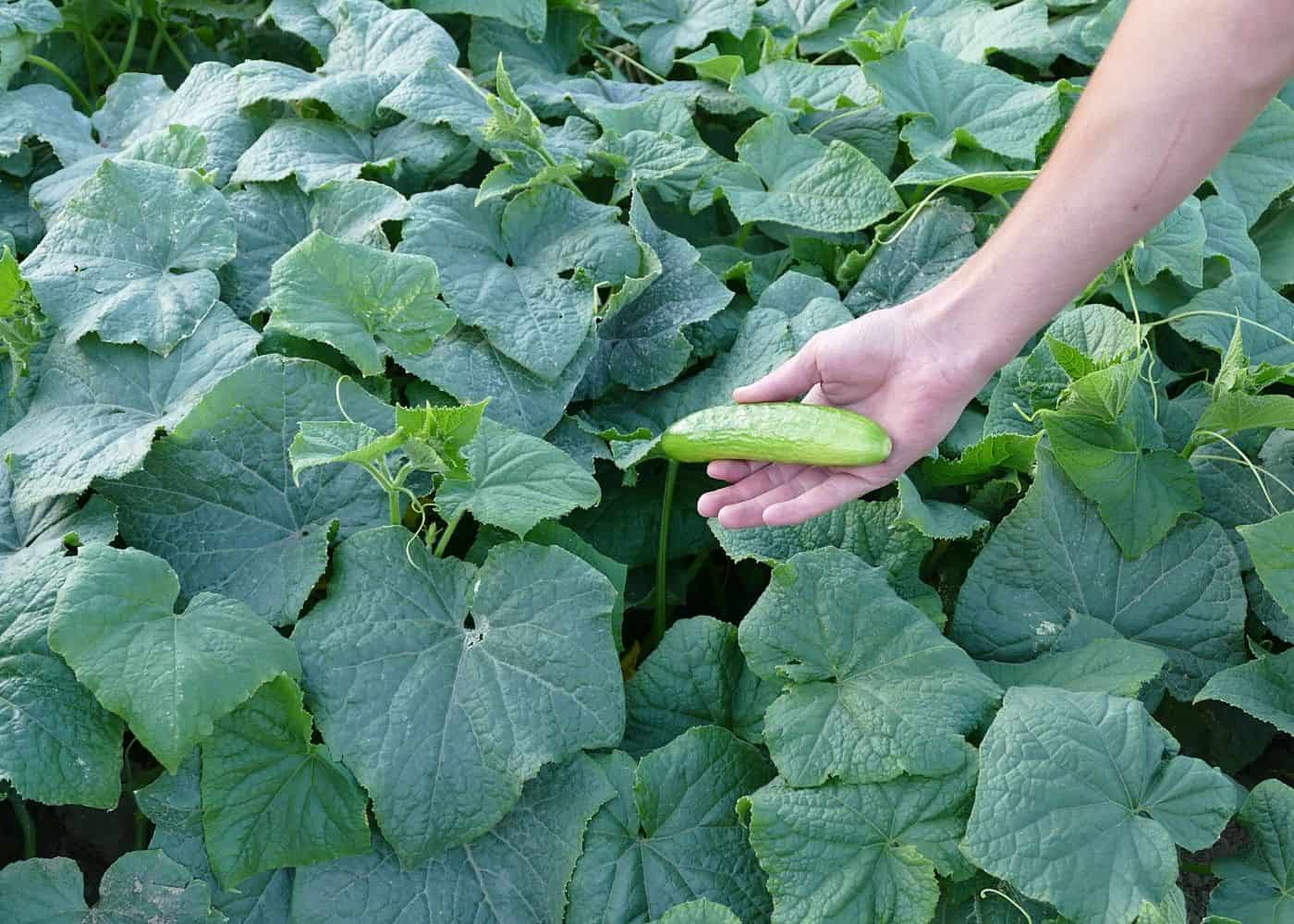
Bad Companions To Avoid Planting Nearby
Avoid growing potatoes near cucumber plants. Because potatoes are deep-rooted plants, their roots take up a lot of volume in the soil. As a result, if planted with potatoes, cucumber plants may not receive the nutrients they require. The potato plants are also attractive to pest insects that may attack your cucumber plants while they are in the neighborhood.
Also, avoid growing your cucumber plants near fennel since it can restrict their development. All types of fennel, including large-bulb Florence vegetable-type fennel and the more-dainty herb fennel, are generally separated from other food crops in the garden.


